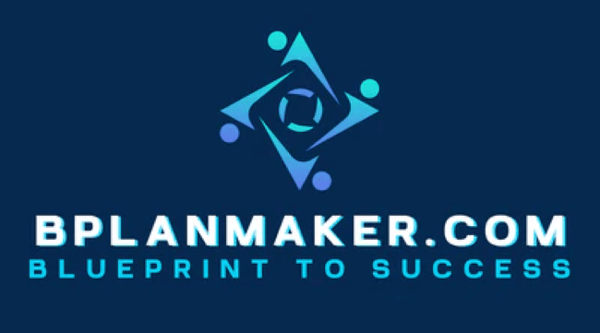
Smart Budgeting for Your Shopify Start-Up Costs
Share
Frequently Asked Questions
1. What are the two categories of start-up costs for a Shopify store?
2. What are some examples of fixed start-up costs?
3. Why is creating a sample business plan PDF important for budgeting?
4. What tools can help in managing a start-up budget?
5. What is one effective budgeting tip for start-up success?
Starting a business can feel like standing on the edge of a cliff, heart racing, wondering how to take that first leap. If you’re planning to launch a Shopify store, understanding your start-up costs is crucial for a smooth take-off. With a solid funeral home business plan or any other business plan in hand, budgeting can transform that anxious leap into a calculated step. Let’s dive into the essentials of budgeting your start-up costs on Shopify!
Understanding Start-Up Costs
Before you can effectively budget, you must first understand what start-up costs entail. These costs are generally split into two categories:
- Fixed Costs: These are recurring costs that do not fluctuate with sales volume, such as rent, utilities, and website hosting.
- Variable Costs: These expenses increase or decrease based on your sales and business activity, including packaging and shipping expenses.
Identifying Your Start-Up Costs
Employing a detailed approach to identify your start-up costs can significantly mitigate future surprises. Here’s a breakdown of key components to consider:
1. Shopify Subscription Fees
Your first expense will be choosing a plan with Shopify. Shopify plans can range from basic to advanced pricing tiers. Determine which plan meets your budget and business needs to ensure a sustainable start to your online store.
2. Domain Name and Hosting
Securing an appealing and easy-to-remember domain is vital for your online presence. You may also need to invest in hosting services if you decide to expand beyond Shopify’s built-in capabilities.
3. Branding and Design
Your brand image is invaluable to your business. Consider budgeting for a professional logo, color schemes, and aesthetic that aligns with your customer base. Platforms like Canva or Adobe Spark can assist in making this affordable.
4. Inventory Expenses
Depending on what you plan to sell, your initial inventory costs can be substantial. Conduct thorough research to estimate how much inventory you will need for your initial orders. Keep in mind that some inventory can be dropped-shipped to lower initial costs.
5. Payment Processing Fees
Shopify provides various payment solutions, but each comes with its own fees. Understand these costs so you can budget accordingly. Payment gateways charge a percentage of each sale, which will impact your overall margins.
Create a Sample Business Plan PDF
One effective way to keep track of your finances and budget is to create a sample business plan PDF. This document will not only help to visualize your financial outlook but can also serve as a guide for intentional spending.
Why You Need a Business Plan
A well-structured business plan provides clarity and reduces the risk of operating without direction. Here’s why this document is a game-changer:
- It helps you outline your start-up costs and predicts your financial forecasts.
- It aids in securing funding, as investors often require a definitive plan before investing.
- Having a business plan ensures you stay committed to your strategies and objectives.
Essential Tools for Budgeting
Knowing how to manage your budget is just as crucial as identifying what those costs are. Luckily, there are a multitude of budgeting tools available to make the process easier:
1. Accounting Software
Platforms like QuickBooks or FreshBooks can simplify tracking your income and expenses. These tools help you maintain accurate financial records, making tax season much smoother.
2. Budgeting Apps
Apps like Mint or YNAB (You Need A Budget) can also help you create budgets that reflect your financial goals. These apps often sync with your bank account, providing a real-time look at your expenses.
3. Excel or Google Sheets
If you prefer DIY methods, using Google Sheets or Excel can help you create customized budgets tailored specifically for your business. You can organize your costs, track them over time, and adjust your budget as needed.
Effective Budgeting Tips for Start-Up Success
Finally, here are a few tried-and-true budgeting strategies to keep your start-up on track:
1. Separate Personal and Business Finances
Keeping personal and business finances separate is crucial. Open a dedicated business account so you can easily track expenses and revenues without mixing them with your personal transactions.
2. Build an Emergency Fund
An emergency fund can save you from unforeseen expenses that arise. Try to set aside a small percentage of your revenue each month until you have enough to cover 3-6 months of expenses.
3. Monitor Your Expenses Regularly
Establish a routine for reviewing your finances. Monthly or quarterly budgeting sessions can help you identify spending patterns and areas where you can cut costs.
4. Stay Flexible
Be prepared to revise your budget as needed. Factors like market demands, supplier pricing, and seasonal trends can significantly affect your financial planning.
Embrace Your Journey Ahead
Budgeting for your start-up costs on Shopify doesn't have to be a daunting task. With the right strategies in place, a well-drafted funeral home business plan, or any other business plan tailored to your niche, can guide you toward success. Keep your initial phase organized and intentional, leveraging tools and resources to help you navigate the financial landscape.
Remember, every successful online store starts with a solid foundation of planning and organization. As long as you keep a close eye on your expenses, maintain a comprehensive budget, and adapt to changes, your Shopify store will be well on its way to thriving in a competitive market. So, take the leap and start budgeting well today!



